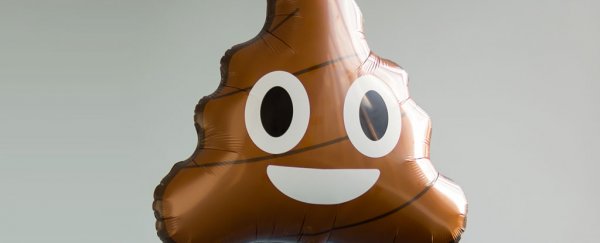The mere mention of a 'faecal transplant' might be something that makes a lot of us squirm, but the truth is that poo transplants from one person to another are an increasingly popular treatment for a range of illnesses.
But what's actually in a poo transplant that makes it so beneficial to the recipient? A new study has shed light on exactly what our poo is made of, in the hopes of figuring out how poo transplants actually work.
"There is no doubt that poo can save lives," says biologist Seth Bordenstein from Vanderbilt University. "Right now faecal transplants are used as the treatment of last resort, but their effectiveness raises an important question: When will doctors start prescribing them, or some derivative, first?"
Faecal transplants actually go way back, with evidence of the treatment being used in China as long ago as the 4th century. More recently, in the 16th century, poo transplants were given the nickname "yellow soup", but it's only been in the past five years that interest in the treatment in contemporary Western science has picked up.
As Bordenstein points out, until 2010 fewer than 10 scientific papers on poo transplants were catalogued each year by medical database PubMed, but by last year this had blown up to 200 separate studies.
Why the explosion of scientific interest? Part of it could be explained by the effective use of fecal transplants in treating Clostridium difficile colitis, an infectious and dangerous diarrhoea that sometimes follows antibiotic treatments, and is estimated to have killed some 29,000 people in an outbreak in the US in 2011.
Faecal transplants have also been used to treat multiple sclerosis, Crohn's disease, constipation, irritable bowel syndrome, and Parkinson's – but what is it about poo that confers medical aid in such a diverse range of conditions?
While much research focuses on the bacterial component of faecal matter as being the active agent in poo transplants, Bordenstein says there's a lot more going on in our poo that could be at play in medical treatment.
"Faeces is a complex material that contains a variety of biological and chemical entities that may be causing or assisting the effects of these transplants," he explains.
A healthy human stool contains around 100 billion bacteria per gram, but that same gram of healthy poo also contains approximately 100 million viruses and archaea (a type of single-celled organism that were once classified as bacteria).
In addition to these, a single gram of poo contains around 10 million colonocytes (human epithelial cells that help protect the colon), plus about a million yeasts, and other single-celled fungi.
Together, all these biological components make up adult faecal matter, which is about 75 percent water and 25 percent solid. Bordenstein says it's unlikely that bacteria alone is what makes poo transplants an effective remedy for problems in the human gut – as the viruses, archaea, and other elements may all play a role in making us better.
"This research is just getting started," he says. "It is driven by the new paradigm of the microbiome which recognises that every plant and animal species harbours a collection of microbes that have significant and previously unrecognised effects on host health, evolution, and behaviour."
Writing in PLOS Biology, Bordenstein and fellow Vanderbilt researcher Diana Bojanova argue that future research efforts should focus on "[d]econstructing the benefit and interactions of constituent parts of fecal matter [to] clarify the relative importance and causality of each of these components and the potential development of specific therapies."
Not only will a greater scientific understanding of poo's remedial constituents lead to new kinds of treatments, but advances in faecal transplants – especially the in way in which patients receive the treatment – could go a long way to reducing the stigma around this unique but clearly important kind of medicine.
"When scientists identify the specific cocktails that produce the positive outcomes, then they can synthesise or grow them and put them in a pill," says Bordenstein. "That will go a long way to reducing the 'icky factor' that could slow public acceptance of this new form of treatment."
